Three billion years ago, Earth was a very different place.
-
GSFC Summer Research Associate 2019 Presentations

Undergraduate Research Associates in Astrobiology: End-of Term Research Presentations
Presenter: Goddard Center for Astrobiology (GCA)
When: August 9, 2019 1PM EDT / 10AM PDT
Meeting Link: https://ac.arc.nasa.gov/gsfc/The GCA sponsors a summer program (URAA) in which talented undergraduate students conduct cutting-edge research under the direction of GCA scientist-mentors. The students present summaries of their research objectives and findings during an end-of-term session delivered both locally and streamed to the astrobiology community as a whole.
The Class of 2019 will present on Friday, August 9th at 1-2 PM EDT in Building 34, Room W130. You are invited to attend, either locally or remotely.
View the full agenda and list of presenters.
Source: [Goddard Center for Astrobiology (GCA)]
August 08, 2019 • Posted by: Miki Huynh • Report issue
-
Workshop Without Walls: Searching for Signs of Subsurface Life on Mars (Extinct and Extant)
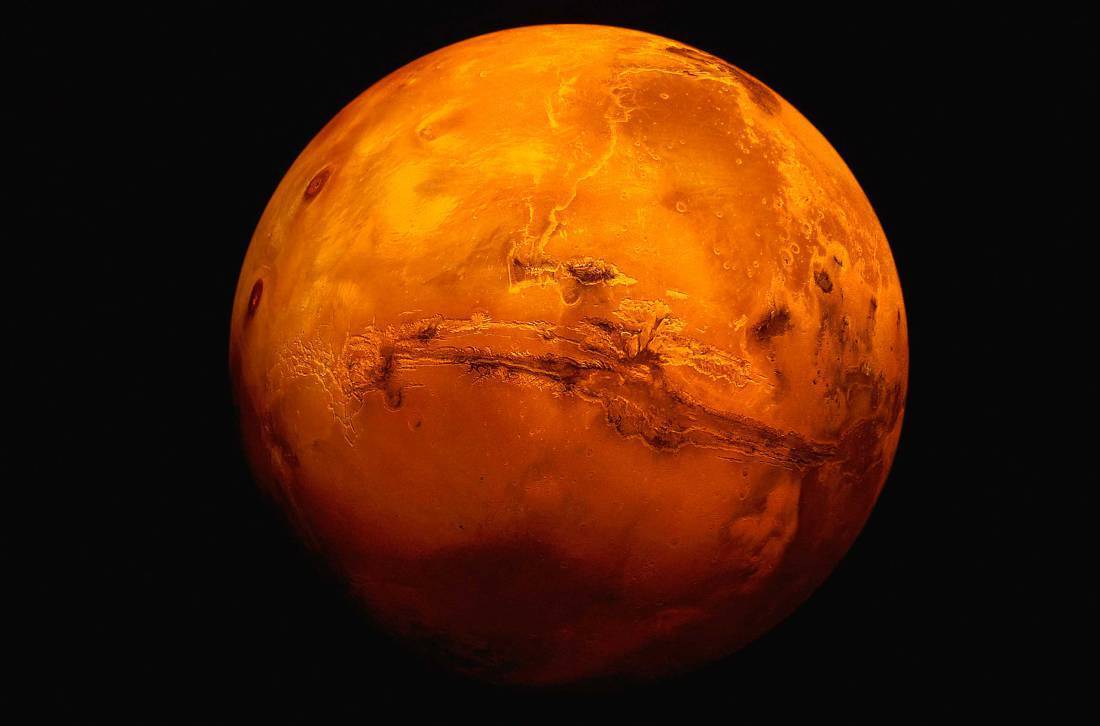
August 8th – Fourth Virtual Meeting, Time: 8:00 – 9:30 AM PDT
Please join us for the fourth Workshop Without Walls on Searching for Signs of Subsurface Life (Extinct and Extant).
Don’t be concerned if you have not participated in the previous editions, links to view them are at the NAI Workshops Without Walls webpage.
The deliverables of this activity will be a series of white papers that will be presented to the community, and then submitted to the decadal committee.
Hope to see you on the 8th.
July 26, 2019 • Posted by: Yael Kovo • Report issue
-
AbGradCon 2019: Live Webcast!

AbGradCon 2019 will be held from July 22-26 at the University of Utah in Salt Lake City, Utah. Image credit: AbGradCon 2019.AbGradCon (Astrobiology Graduate Conference) provides a unique setting for astrobiologically-inclined graduate students and early career researchers to come together to share their research, collaborate, and network. AbGradCon 2019 marks the 15th year of this conference—each time in a different place and organized by a different group of students, but always with the original charter as a guide.
Streaming Tuesday July 22 – Thursday July 25
Since it is organized and attended by only graduate students, post docs, and select undergraduates, AbGradCon is an ideal venue for the next generation of career astrobiologists to form bonds, share ...
July 23, 2019 • Posted by: Yael Kovo • Report issue
-
From Apollo to Europa: The Past and Future of Lunar Exploration
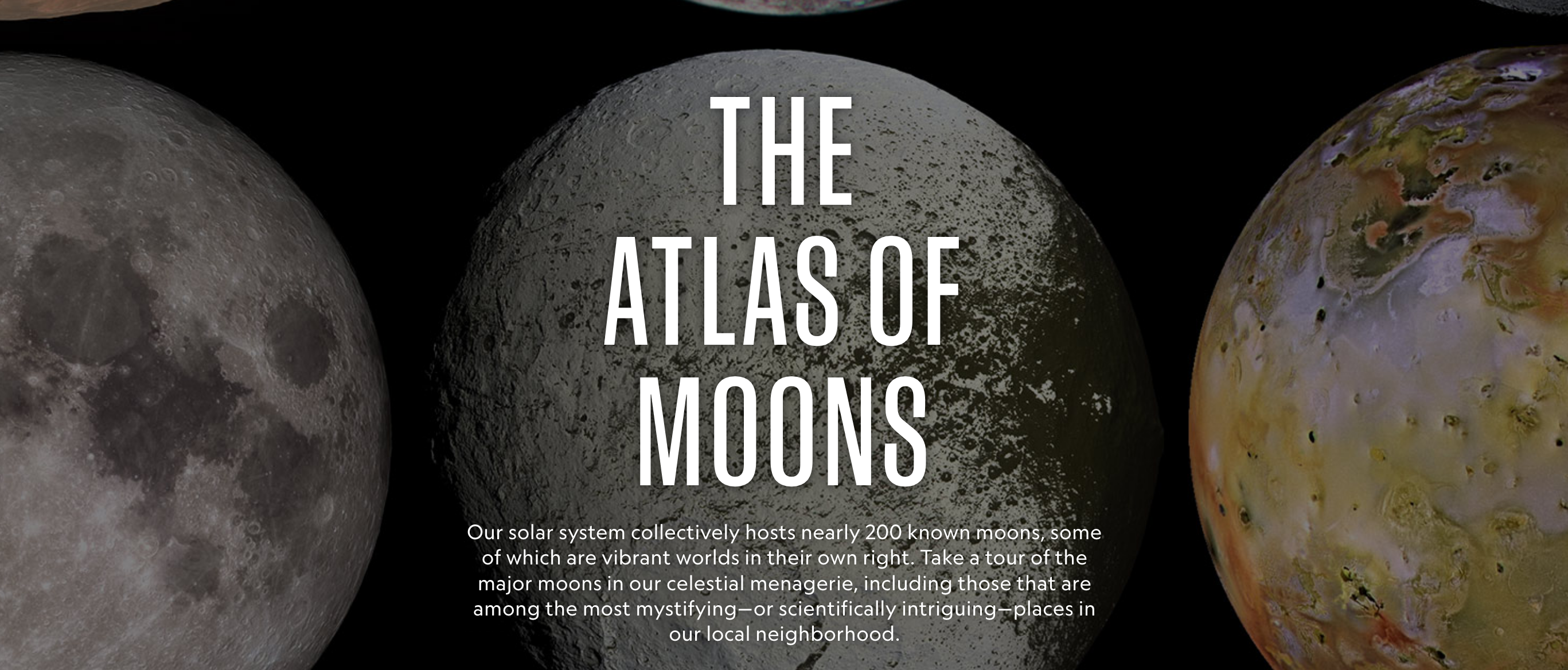
Image from the online atlas created by National Geographic providing a comprehensive look at the moons, including those significant to the study of life in the universe, that populate our cosmic neighborhood. Source: National Geographic“We choose to go to the moon,” President John F. Kennedy proclaimed, in an iconic 1962 speech at Rice University in Texas. “We choose to go to the moon…because that challenge is one that we are willing to accept, one we are unwilling to postpone, and one we intend to win.” With this bold declaration, Kennedy galvanized public support of NASA’s fledgling Apollo program and its unprecedented goal: landing humans on the lunar surface and returning them safely to earth. Before the end of the decade, astronauts Neil Armstrong and Buzz Aldrin would become the first humans to ...
July 22, 2019 • Written by: Glorie Martinez • Report issue
-
Beyond the Galileo Experiment

Solar System Portrait - Earth as 'Pale Blue Dot'. Image credit: NASA/JPL-CaltechIn December 1990, the Galileo spacecraft completed its closest approach of our planet. This fly-by mission, led by astronomer Carl Sagan, offered researchers an unprecedented opportunity to study the hallmarks of life on Earth from space along the way to Jupiter.
Only a few months before the Galileo experiment, Sagan had taken advantage of another remarkable opportunity while working on the Voyager 1 mission. As the interstellar probe reached the fringes of our solar system, Sagan suggested engineers turn its camera around to catch one last glimpse of its home planet. This evocative image of Earth, captured from a distance ...
Source: [Nature Astronomy]
July 18, 2019 • Written by: Glorie Martinez • Report issue
-
AbSciCon 2019 Talks Now on YouTube

AbSciCon 2019 was held in Seattle, WA, from June 24th to June 28th and was a resounding success with just under 1000 attendees sharing their science over five days. This year, 150 talks and sessions were webcast live from two rooms simultaneously, and each of those talks are now available to watch on demand on the NASA Astrobiology YouTube channel.
NAI 20th Anniversary: A New Discipline Reaches Maturity I
NAI 20th Anniversary: A New Discipline Reaches Maturity II
July 15, 2019 • Posted by: Yael Kovo • Report issue
-
How Scientists Are Searching for Life on Titan

A false color, infrared view of Saturn's largest moon Titan, captured by NASA's Cassini spacecraft. Source: NASA/JPL-Caltech/University of Arizona/University of IdahoAt the dawn of the new millennium, Titan was a mystery to the scientific community. The alien moon was known as the largest of Saturn’s 62 natural satellites, a Mercury-sized behemoth hidden beneath dense, nitrogen-rich smog. However, the arrival of the Cassini spacecraft in 2004 marked the beginning of an exponential increase in scientists’ limited knowledge of Titan.
Thanks to the data compiled by Cassini, scientists have now identified Titan as one of the most Earth-like worlds in our solar system. It’s the only place besides Earth to feature liquid rivers and lakes on its surface, and the ...
July 15, 2019 • Written by: Glorie Martinez • Report issue
-
AbSciCon 2019 Student Poster Competition

First place winner, Andrew Gangidine (left), and third place winner, Lavontria Aaron (right), stand with NASA Astrobiology Program Director, Mary Voytek, as they receive the AbSciCon 2019 student poster competition awards. Credit: Michael L. WongFor over 15 years, the NASA Astrobiology Institute has been pleased to host the Student Poster Competition at the Astrobiology Science Conference (AbSciCon), an event which spotlights future astrobiologists and their promising contributions to the field. This year, we are excited to report that seventy-one graduate and undergraduate students participated in the contest.
1st place was awarded to Andrew Gangidine of the University of Cincinnati for his poster “A Trace Element Biosignature for Life on Early Earth and Mars.”
Second-place went to Jayme Feyhl-Buska of the University of Southern California for the research “Targeted Enrichments Reveal Potential Metabolisms, Novel Taxa ...
July 12, 2019 • Written by: Glorie Martinez • Report issue
-
Key Early Steps for Origin of Life Occur Under a Variety of Conditions

Scientists conducted a series of test meant to capture complex chemical mixtures like those that lightning strikes may have created before life on Earth. The resulting chemistry may reveal an important step toward the origin of life. Image: Pixabay / AbelEscobarUNIVERSITY PARK, Pa. — Potential precursors to life on Earth form from a variety of complex mixtures, according to a team of scientists who say this could point to the development of building blocks crucial to forming genetic molecules for the origins of life on Earth.
Genetic molecules provide the ability to store and replicate information and may have been critical for the origin of life, but it is unclear how they arose from complex chemical environments that existed on early Earth. New findings, published this week in the journal Scientific Reports, suggest the answer may start with nitrogen heterocycles, ringed ...
Source: [PENN State News]
July 10, 2019 • Written by: Matthew Carroll • Report issue
-
NASA Scientists, Engineers Honored with Presidential Early Career Awards

Credit: Executive office of the president of the united statesRecipients of the Presidential Early Career Award for Scientists and Engineers (PECASE) have been announced, and include a number of astrobiologists who have been involved with research at the NASA Astrobiology Program. The list includes eighteen NASA researchers in total, as well as 296 additional federal researchers. The awards will be presented later this year at a ceremony in Washington DC.
Included among the recipients are:
- Giada Arney, NASA’s Goddard Space Flight Center, Greenbelt, Maryland – for far-reaching influence in predicting, observing, and communicating about habitability and the potential for life beyond Earth
- Laura Barge, NASA’s Jet Propulsion Laboratory ...Source: [The White House]
July 07, 2019 • Posted by: Yael Kovo • Report issue
-
Researchers Cook Up Chemical Reactions in Primordial Soup
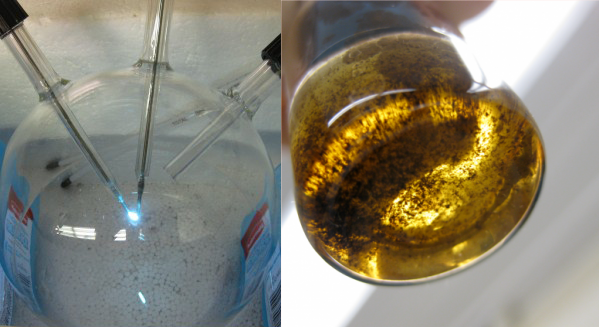
Left: Spark in Miller-Urey apparatus. Right: Reaction involving the complex organics from a Miller-Urey experiment with a nitrogen heterocycle. Credit: Karen Smith / Boise State UniversityNewswise — In the 1950s, when chemist Stanley Miller created the experiment that would eventually bear his name – the Miller-Urey experiment – he was trying to simulate conditions of early Earth. In a glass sphere filled with methane, water vapor, ammonia and hydrogen (representing Earth’s early atmosphere), electrodes sparked to simulate lightening and the apparatus alternately heated and cooled its contents. After one week, a jet black solution formed. From this complex primordial soup, Miller made an incredible discovery: the solution that he collected contained multiple amino acids – the building blocks of proteins.
While there has been significant progress made towards ...
Source: [Boise State University]
July 02, 2019 • Written by: News Wise • Report issue
-
NASA's Dragonfly Will Look for Origins, Signs of Life on Titan
NASA has announced that our next destination in the solar system is the unique, richly organic world Titan. Advancing our search for the building blocks of life, the Dragonfly mission will fly multiple sorties to sample and examine sites around Saturn’s icy moon.
Dragonfly will launch in 2026 and arrive in 2034. The rotorcraft will fly to dozens of promising locations on Titan looking for prebiotic chemical processes common on both Titan and Earth. Dragonfly marks the first time NASA will fly a multi-rotor vehicle for science on another planet; it has eight rotors and flies like a large ...

This illustration shows NASA’s Dragonfly rotorcraft-lander approaching a site on Saturn’s exotic moon, Titan. Taking advantage of Titan’s dense atmosphere and low gravity, Dragonfly will explore dozens of locations across the icy world, sampling and measuring the compositions of Titan's organic surface materials to characterize the habitability of Titan’s environment and investigate the progression of prebiotic chemistry. Credits: NASA/JHU-APLSource: [NASA]
July 02, 2019 • Written by: NASA • Report issue
-
Cyanide Compounds Discovered in Meteorites May Hold Clues to the Origin of Life
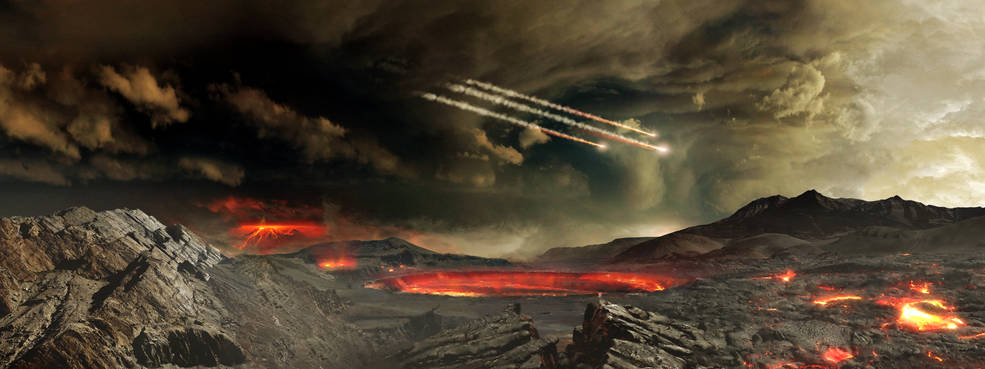
Artist’s concept of meteors impacting ancient Earth. Some scientists think such impacts may have delivered water and other molecules useful to emerging life on Earth. Credits: NASA's Goddard Space Flight Center Conceptual Image LabCyanide and carbon monoxide are both deadly poisons to humans, but compounds containing iron, cyanide, and carbon monoxide discovered in carbon-rich meteorites by a team of scientists at Boise State University and NASA may have helped power life on early Earth. The extraterrestrial compounds found in meteorites resemble the active site of hydrogenases, which are enzymes that provide energy to bacteria and archaea by breaking down hydrogen gas (H2). Their results suggest that these compounds were also present on early Earth, before life began, during a period of time when Earth was constantly bombarded by meteorites and the atmosphere ...
Source: [NASA]
July 01, 2019 • Written by: NASA • Report issue
-
AbSciCon 2019 Streaming Live

AbSciCon 2019 will be webcast live from Seattle, WA, from June 24th to June 28th. Throughout the week there will be two concurrent streams that you can watch. These include all plenary sessions in the Grand Ballroom, and all sessions in the Regency EFG and Grand IJ rooms.
You can watch both streams on the official AbSciCon 2019 homepage, or the NASA Astrobiology Facebook page.
Please check the official AbSciCon 2019 program or download the mobile app to find sessions in the above rooms that will be webcast.
Want to be social? Follow along on Twitter for updates using #AbSciCon2019.
Source: [AbSciCon]
June 24, 2019 • Written by: NASA Astrobiology Program • Report issue
-
Curiosity Detects Unusually High Methane Levels
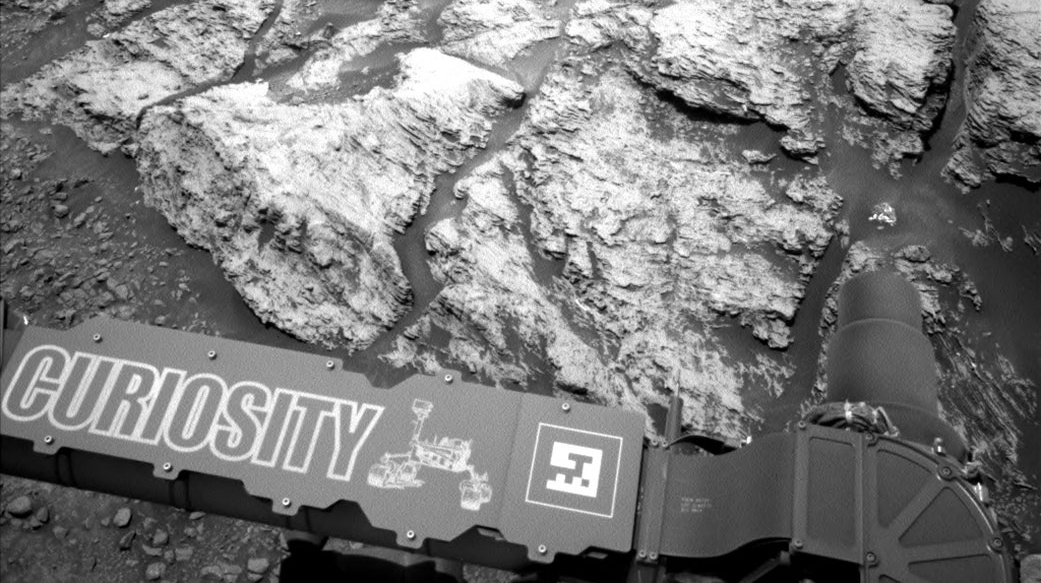
Image taken by the left Navcam on NASA's Curiosity Mars rover on June 18, 2019, the 2,440th Martian day, or sol, of the mission. It shows part of "Teal Ridge," which the rover has been studying within a region called the "clay-bearing unit."Credit: NASA/JPL-CaltechThis week, NASA’s Curiosity Mars rover found a surprising result: the largest amount of methane ever measured during the mission — about 21 parts per billion units by volume (ppbv). One ppbv means that if you take a volume of air on Mars, one billionth of the volume of air is methane.
The finding came from the rover’s Sample Analysis at Mars (SAM) tunable laser spectrometer. It’s exciting because microbial life is an important source of methane on Earth, but methane can also be created through interactions between rocks and water.
Curiosity doesn’t have instruments that can definitively say what ...
Source: [NASA]
June 23, 2019 • Written by: NASA • Report issue



